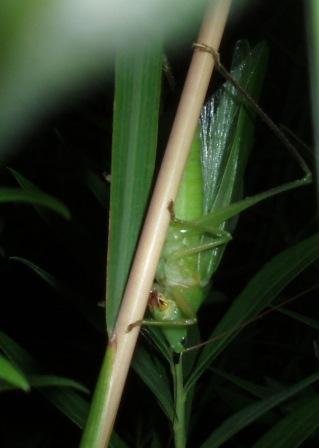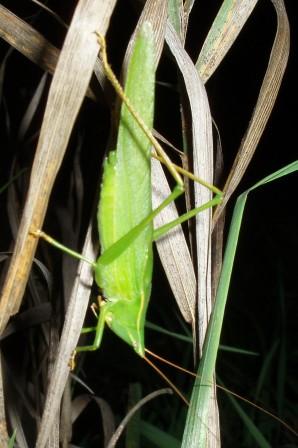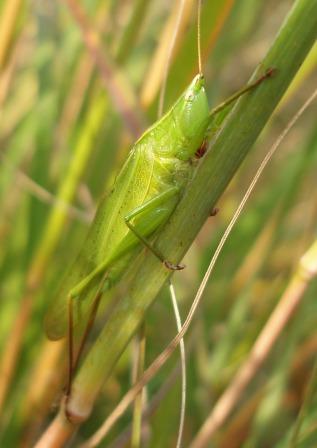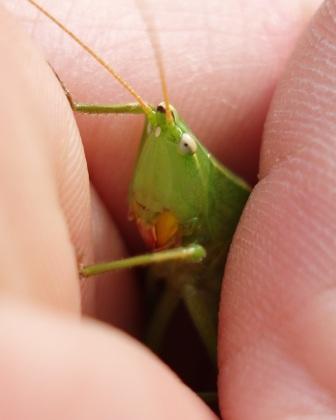by Carl Strang
Though my main research focus is singing insects, I don’t end up photographing them much, as I am listening for them rather than looking for them. Sulfur-winged grasshoppers continued to be an early-season focus.

Though I added several more county records for the species, there was not additional range in their color variation. This female was at Cook County’s Bluff Spring Fen.

Not much different, this male was around the corner of Lake Michigan at Indiana Dunes National Lakeshore.
Only 8 species of singing insects could be found at Goose Pond. There will be many more there later in the season.

Spring field crickets seldom come into view. This female was a challenge to photograph as she crawled among the grasses.

This katydid nymph climbed up onto the sheet illuminated by the UV light. I am reluctant to say which conehead species she might be.
The season seems barely begun, but already I am closing the book on two species.

The Vermont Cemetery Prairie Preserve in Will County reportedly is one of the few places in the Chicago region which still harbors prairie cicadas. They were done, however, by the time I got there on June 26.
I have just 3 sites to check next year as good candidates for persisting prairie cicada populations. Protean shieldbacks also apparently are done. I added only 3 county records for them in their brief 2016 season. This was a wakeup call, and I will need to get on my horse right away when they start next year.





